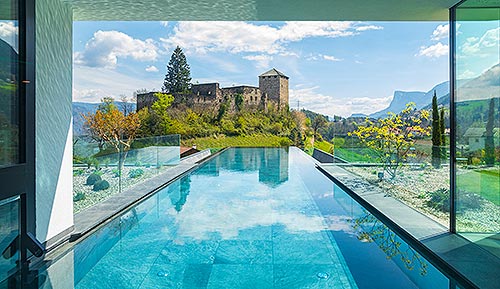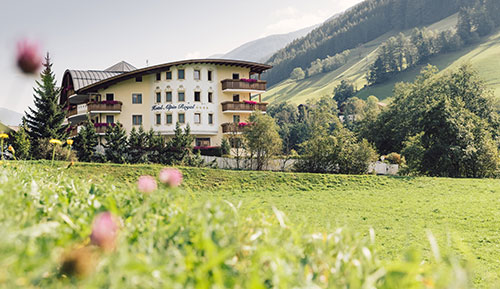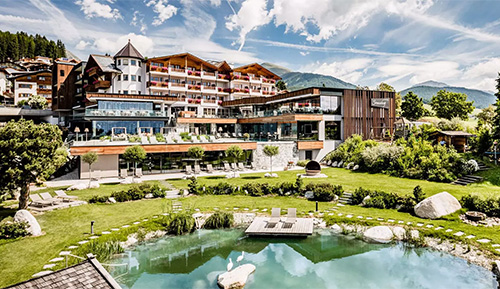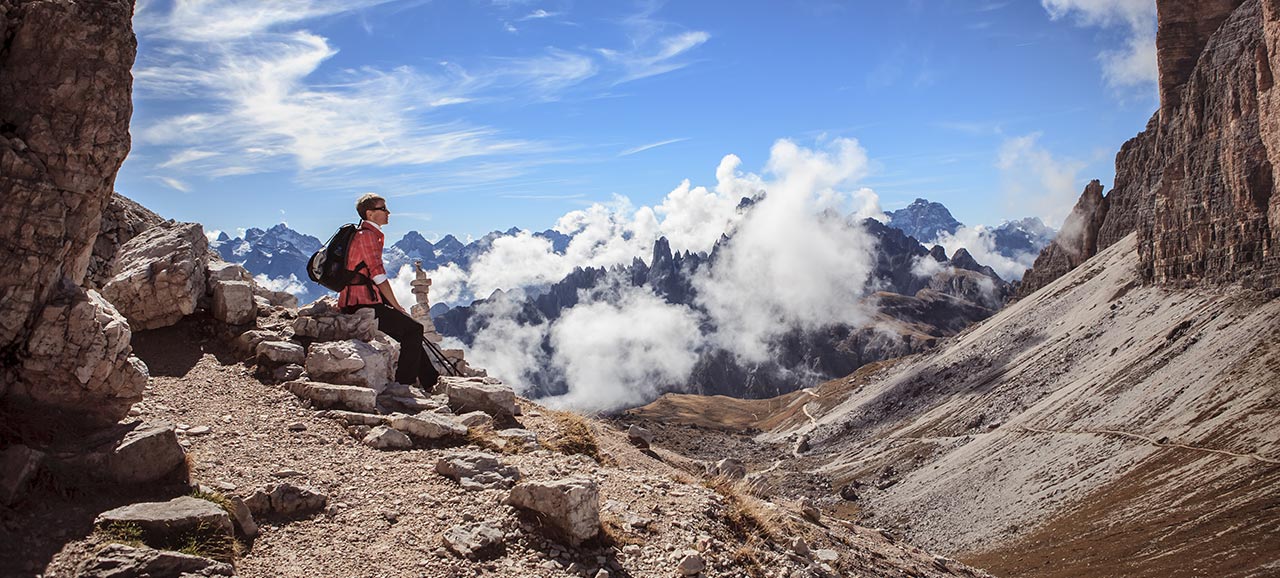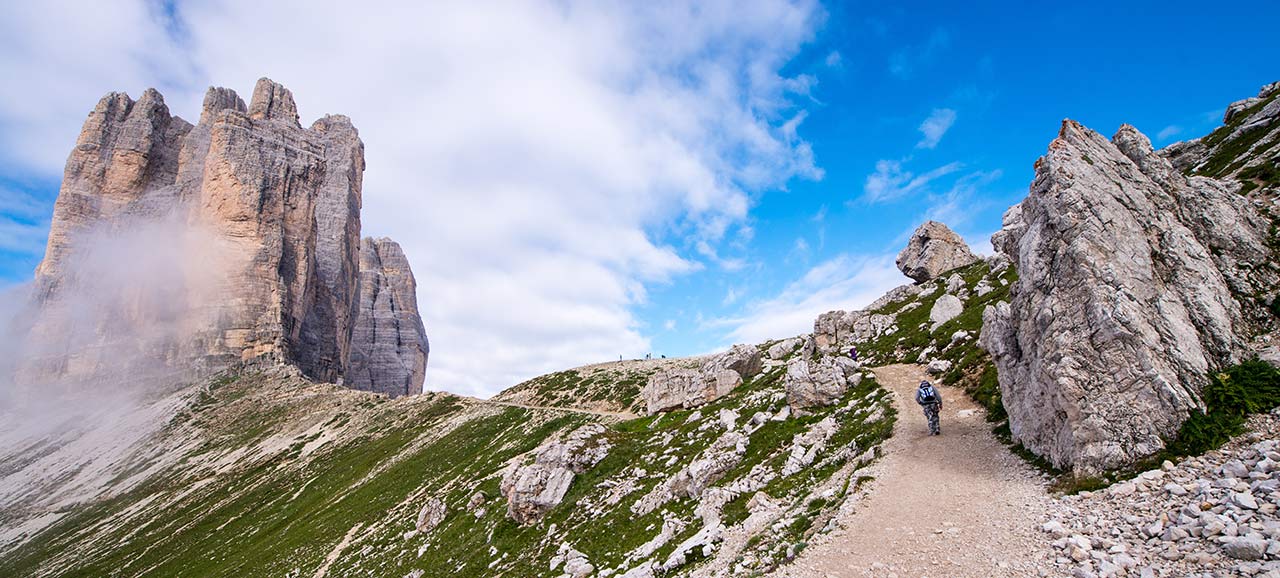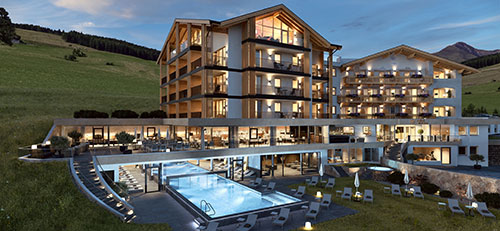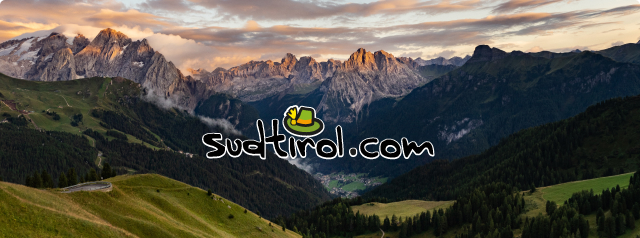The Dolomites: World Natural Heritage UNESCO
White peaks, steep rock walls, lush alpine pastures and deep blue lakes - all this is characteristic of the Dolomites, one of the most imposing mountain chains in the world. The Dolomites are located in the Southern Limestone Alps covering the Italian provinces of Bolzano, Trento, Belluno, Pordenone and Udine. The rugged rock formations of this unique mountain world characterise the landscape in the south-eastern part of South Tyrol, where they border the Puster Valley to the North and the Adige and Isarco Rivers to the West.
Formation and discovery of the Dolomites
The mountains reach altitudes of over 3000 metres above sea level and developed on the sea bed about 230 million years ago. At their origin, the Dolomites used to be a giant coral reef in the prehistoric Tethys Ocean. The coral reefs continued to grow with deposits. Tectonic influences resulted in a lowering of the sea level and the withdrawal of groundwater, whereby the rocks had become free. Erosion resulted in a completely varied formation of rock layers, and over the course of the centuries the impressive peaks developed into today's appearance.
The Dolomites are named after the characteristic rock, from which they consist. The rock was named after its discoverer Déodat de Dolomieu, a French geologist and mineralogist. In 1789 Dolomieu travelled through the Southern Alps and discovered an unknown mineral. He then examined his discovery and gave it to the chemist, botanist and geologist Nicholas de Saussure. Against the will of Dolomieu, Saussure called the new rock "Dolomite".
The "Pale Mountains"
The most characteristic feature of the Dolomite rock is its bright colour. This is why the Dolomites are also called the "Pale Mountains". The Ladin population, the oldest inhabitants of the mountains, have their own story about the gleaming of the rocks. A moon princess lived on earth and felt extremely homesick. The dwarf population did not want the princess to leave her husband so they decided to cover the dark mountains with bright treads. And even if the princess is not alive anymore, the rocks still have a bright colour.
Another interesting phenomenon is the so-called Enrosadira, the Ladin term for the alpenglow. During sunrise and sunset the Dolomite rocks are covered in red colour tones. The mystic legend of King Laurins Rose Garden talks about this phenomenon.
The Dolomites do not only impress because of the interplay of colours, but mainly because of their varied landscape. Below the bright rock walls you see dark scree leading down to green meadows, which again border with dense forests. Here and there you will find crystal-clear alpine lakes, which mirror the Dolomite Peaks. A varied flora and fauna has developed in this impressive landscape. The flora is characterised by ground-covering moss, Edelweiss, blooming orchids and healthy mountain pine. If you are lucky, you might see hares, squirrels, marmots, deer and chamois.
The Dolomites - World Natural Heritage Site by UNESCO
The Dolomites provide a true natural phenomenon of unique beauty and a representative example of the big phases of the history of earth. These are the reasons why parts of the mountains were added to the World Natural Heritage list by UNESCO in June 2009. Thanks to this award, some projects for the protection, appreciation and promotion of this area could be realised.
A total of nine Dolomite groups have been listed as UNESCO World Natural Heritage Sites. Part of the nature heritage is of course the queen of the Dolomites, the Marmolada. Also on the list are Monte Pelmo, the Croda da Lago mountain massif, the Pala Mountain Group, the Belluno Dolomites, the Vette Feltrine Group, the Friuli Dolomites and Oltre Piave, the Northern Dolomites, the Puez-Odle Mountain Group, the region Catinaccio, Sciliar and Latemar, the Bletterbach Canyon, and the Brenta Mountain Group.
Other known mountain massifs in the Dolomites, which are however not part of UNESCO's natural heritage, are the Sella Group, the Sasso Lungo Mountain Group, the Tofana, and the Cristallo Mountain Group.

